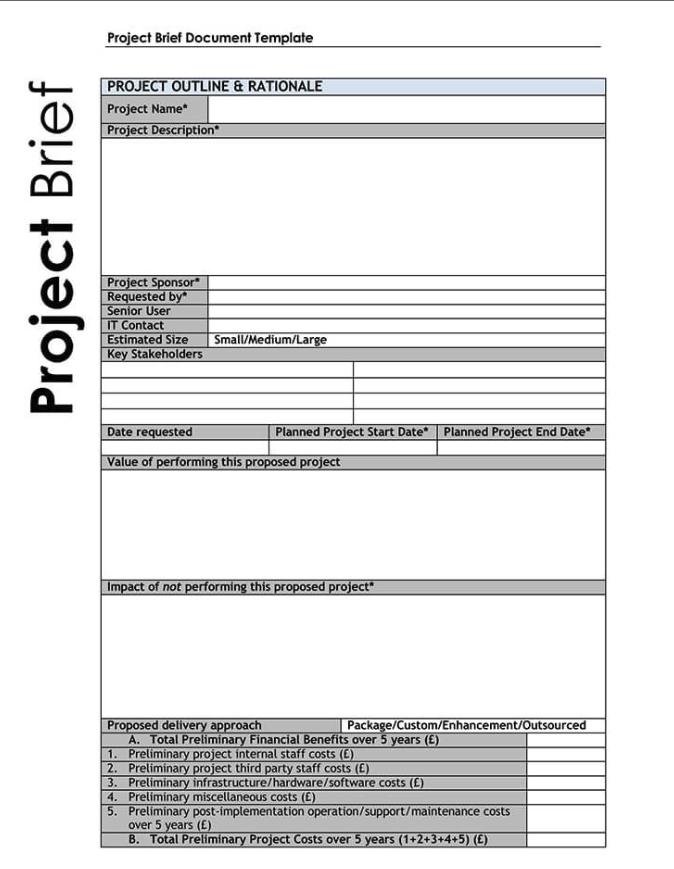The project brief is a fundamental tool in project management that serves as a foundational document guiding the entire project. However, this document belongs to Prince2 Methodology Framework for effective control environement project management.
Thank you for reading this post, don't forget to subscribe!It outlines the key elements of a project, ensuring that all team members and stakeholders have a clear understanding of the project’s scope, objectives, and constraints. This article explores the essential aspects of a project brief template and its indispensable role in effective project management.
What is a Project Brief?
A project brief is a concise document that describes the essential outlines of a project before it begins. It sets the stage for project planning and execution by providing a snapshot of what needs to be achieved and the context in which the project will operate.
Key Components of a Project Brief Template
A comprehensive project brief template should include several critical sections:
Project Overview
This section provides a summary of the project, including its background and the business case. It helps stakeholders understand why the project is necessary and how it fits within the broader business strategy.
Objectives
Clearly defined objectives are crucial. They should align with the overall business goals and be specific, measurable, attainable, relevant, and time-bound (SMART).
Scope
Details the boundaries of the project, specifying what is included and what is excluded. This section helps manage stakeholders’ expectations and prevents scope creep.
Stakeholders
Lists all parties interested in or affected by the project, including their roles and responsibilities. This ensures everyone knows who is involved and how.
Requirements
Outlines the project requirements, detailing the necessary conditions or capabilities needed for the project to be successful.
Deliverables
Specifies what the project will produce. This can include products, services, or other end results that are expected from the project.
Timeline
Provides an estimated schedule for the project, including key milestones and deadlines. This is essential for tracking progress and ensuring timely delivery.
Budget
Details the financial resources allocated to the project. It should include a breakdown of costs for different project activities and contingencies.
Risks
Identifies potential risks that could impact the project, along with strategies for mitigation. This proactive approach helps in managing uncertainties effectively.
Assumptions and Constraints
Recognizes any assumptions and constraints that may affect project planning and execution. This includes available resources, dependencies on other projects, and external factors.

Role of a Project Brief Template in Project Management
The project brief plays a critical role at various stages of project management:
Initiation
It serves as a key document that helps initiate the project by providing a clear picture of what needs to be accomplished and the preliminary resources required.
Planning
The brief is a reference point during the planning phase, helping to align the project plans with the business goals and stakeholder expectations.
Execution
As the project moves to the execution phase, the project brief helps keep the team focused on the objectives and deliverables, guiding the day-to-day activities and decision-making.
Monitoring and Controlling
The brief provides a benchmark against which the project’s progress can be measured. It helps in monitoring scope, budget, and timelines, ensuring the project stays on track.
Closing
At the project’s conclusion, the project brief helps in evaluating whether the project has achieved its goals and delivering a final report to stakeholders.
Project Brief vs. Project Charter
Here are some major difference between Project Brief & Project Charter;
Developing an Effective Project Brief
Creating an effective project brief involves careful consideration and collaboration:
Engage Stakeholders
Involving stakeholders in the development of the project brief ensures that their needs and expectations are understood and integrated.
Research and Analysis
Conduct thorough research and analysis to back up the project proposal and ensure that the objectives and strategies are grounded in reality.
Clarity and Precision
The project brief should be clear and concise, avoiding vague language and ensuring that all terms and project aspects are well-defined.
Review and Refinement
The brief should be reviewed and refined as necessary to incorporate feedback from stakeholders and adapt to any changes in the project context.
Conclusion
The project brief template is an essential tool in project management, laying the groundwork for successful project execution. It ensures clarity and alignment among project stakeholders, facilitating effective communication and project delivery.
Grab: Complete Project Lifecycle Documents & Templates Bundle
By carefully crafting a project brief, project managers can establish a clear roadmap for achieving project goals within the defined scope, timeline, and budget, ultimately leading to enhanced project outcomes and stakeholder satisfaction.




